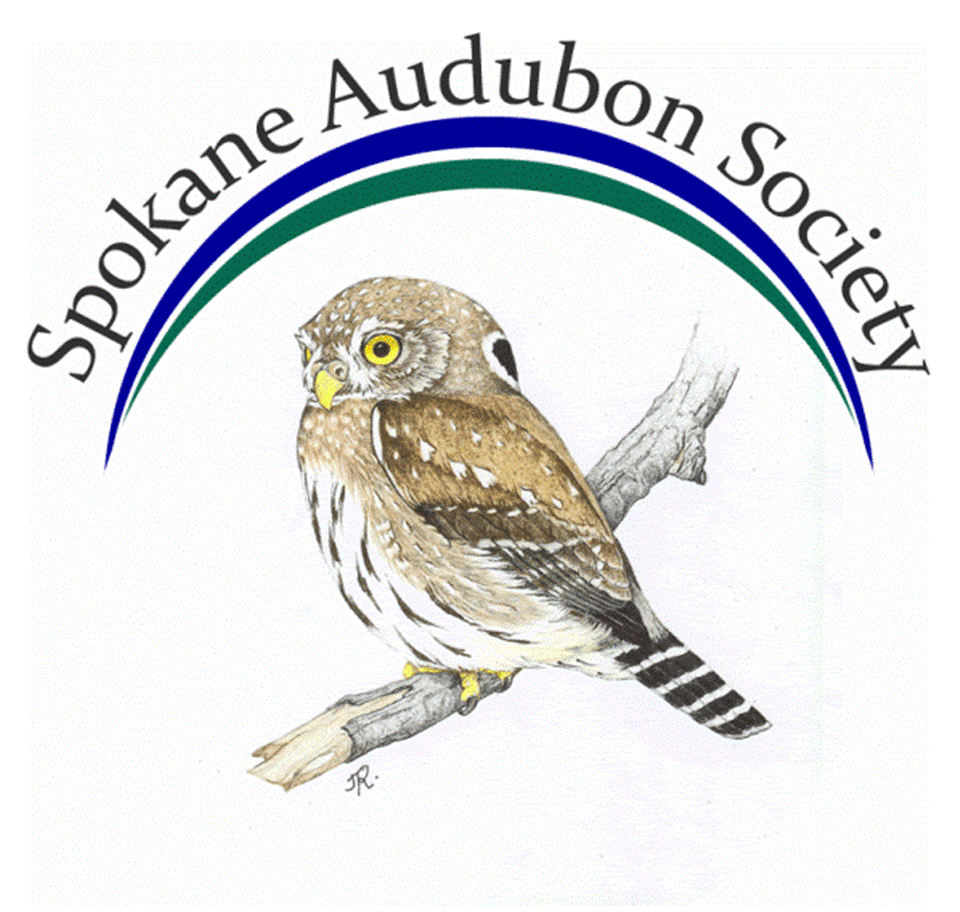Madonna looking for bald eagles on Lake Couer d'Alene, Idaho last winter.
Madonna Luers
by Madonna Luers
I’m the newest board member, elected in 2019, about eight months after I retired from 34 years as the Washington Department of Fish and Wildlife (WDFW) public information officer in Spokane. I promised Audubon members at my retirement party that I would become more involved since I only had participated in chapter meetings and field trips peripherally during my professional career. Now I’m a lifetime member, publicity chair, and recording secretary who hopes to bring new members to our organization.
I was born in 1953 in Denver, Colorado, and raised in Omaha, Nebraska, with three sisters, by parents who loved to take us on weeks-long car-camping trips throughout the country, mostly west to national parks, forests, and wildlife refuges. My love of the outdoors definitely was molded then and I vowed to someday leave the Midwest’s predominately private land base and move out west near public-owned playgrounds.
After gaining a Journalism/English bachelor’s degree at the University of Nebraska-Omaha, I worked as a newspaper reporter, then as a public information officer for the Nebraska Game and Parks Commission, which included promotion of Platte River Sandhill Crane watching tours. When I realized that I was slowly, like through osmosis, learning wildlife ecology from the biologists, I decided to accelerate my education at the University of Wisconsin-Madison. There I earned a master’s degree in Environmental Communications, studying under Clay Schoenfeld, who took us students to the shack on the Wisconsin River where his own teacher, Aldo Leopold, wrote the ecological classic “Sand County Almanac.” In my quest to go west, I volunteered as a seasonal naturalist at Glacier National Park in Montana, moved to Coeur d’Alene, Idaho, to cover the environment and education for the Spokesman-Review’s North Idaho Bureau, then to Spokane and WDFW. My WDFW career was full of incredible adventures, telling the many stories of fish and wildlife management through the news media, agency publications and social media platforms. Urban-wandering moose, coyotes and turkeys were perennial headlines and helicopter-net-gunning and radio-collaring deer and elk for research was exciting. But our threatened and endangered species recovery work for woodland caribou, Upland Sandpiper, Peregrine Falcon, bull trout, pygmy rabbit, Sharp-tailed and Sage Grouse, and gray wolf was some of the most challenging and memorable.
California Quail.
From the time I watched orioles build a basket nest in a tree outside my childhood home or spotted my first magpie during a family road trip west, I’ve loved birds. But I didn’t really get into “birding” until recently. Part of the reason I wanted to get more involved with Audubon was to learn more from you veteran birders, particularly to increase my birdsong “vocabulary.”
I’m always looking for birds when I travel, but have only made a few trips just to see birds (like Sage Grouse dancing on leks at Malheur NWR in Oregon). My husband, a retired WDFW research scientist, introduced me to the Texas Gulf Coast where he spent part of his childhood. One of our favorite places there is Laguna Atascosa NWR with its Green Jays, Great Kiskadees and more. We have bird-pointing dogs that we’ve hunted behind for Gambel’s, Scaled, and Montezuma Quail in southeast Arizona, Sharp-tailed Grouse in eastern Montana and South Dakota, Northern Bobwhite in Nebraska, and of course California Quail, Gray Partridge, Chukar, Ruffed Grouse, and Ring-necked Pheasants here in Washington. One of my favorite birding experiences was watching a Merlin hunt “with” us across a Montana field, homing in on the insects and tiny songbirds that flushed up under our dogs as they coursed back and forth across the wind to find grouse.
My favorite bird is the California Quail. Their plumage is so beautiful and I love to watch their comical rolling movement around winter feeders at our Greenbluff home. Like all gallinaceous birds, they’re also tasty!
My advice to newcomers is what I’m trying to do now myself -- concentrate more on learning bird sounds since so many species are difficult to just see. And as for the most important issue for the future of birds and birding? I have to agree with all my fellow board members about climate and habitat change, but especially with Jenny Michaels, who last month said that the heart of those issues is that “not enough people are engaged with nature.” I hope to change that a little during my Audubon service.








